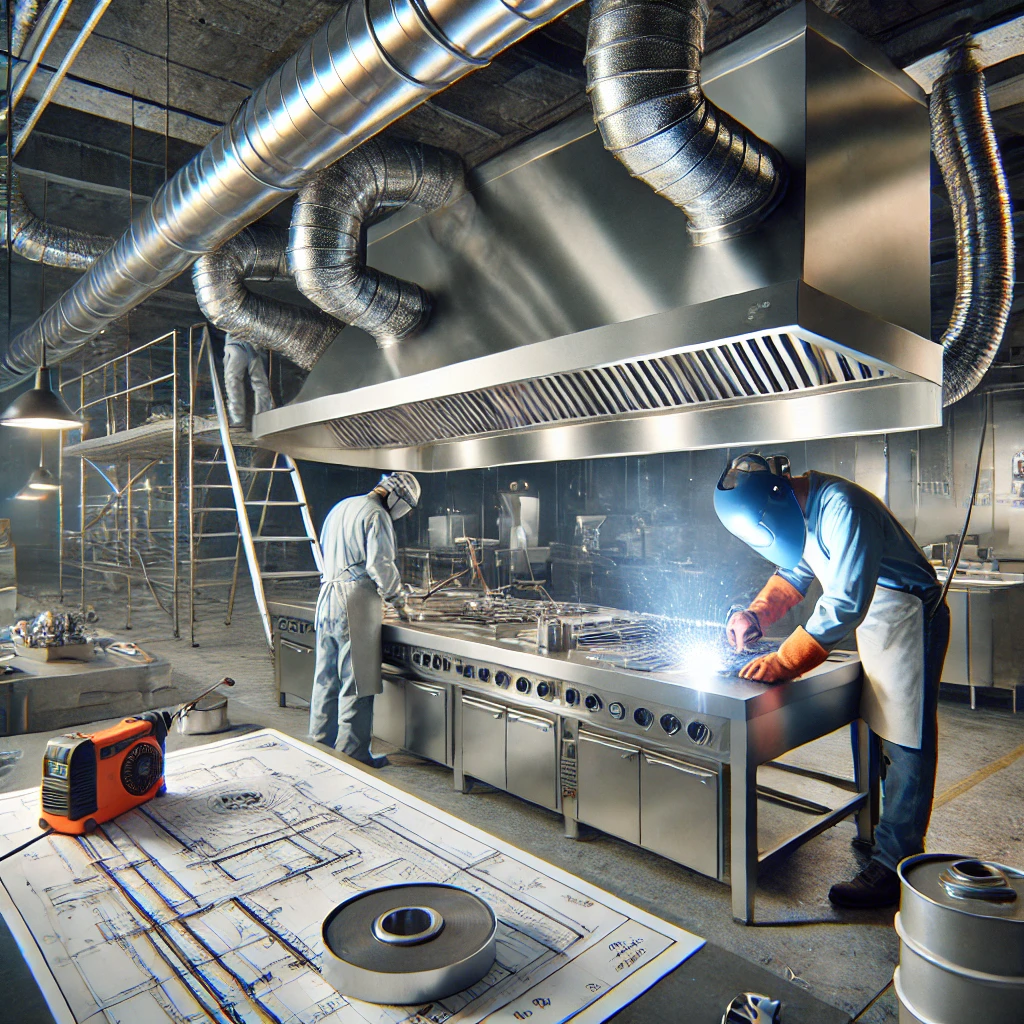In a bustling commercial kitchen, heat, smoke, and grease are inevitable. That’s where a commercial kitchen hood comes in—a critical component for ensuring safety, efficiency, and compliance with health regulations. But have you ever wondered how these essential pieces of kitchen infrastructure are built? Let’s take a deep dive into the construction and engineering behind commercial kitchen hoods.
Understanding the Purpose of Commercial Kitchen Hoods
Before we explore the manufacturing process, it’s important to understand why commercial kitchen hoods are necessary. Their primary functions include:
-
Smoke and Grease Removal: Extracting airborne grease, fumes, and smoke to maintain a clean cooking environment.
-
Heat Ventilation: Reducing excess heat to improve comfort for kitchen staff.
-
Fire Safety: Preventing grease buildup, which can be a significant fire hazard.
-
Regulatory Compliance: Meeting health and safety codes set by local and national authorities.
Step 1: Design and Planning
Each commercial kitchen has unique ventilation needs based on factors such as kitchen size, type of cooking equipment, and volume of cooking. Engineers and designers collaborate to create a hood system tailored to these requirements. The design process includes:
-
Determining the size and shape of the hood to maximize coverage.
-
Selecting the appropriate exhaust rate (CFM - cubic feet per minute) based on cooking intensity.
-
Incorporating fire suppression systems as required by safety codes.
-
Ensuring compatibility with ductwork and external exhaust fans.
Step 2: Material Selection
Commercial kitchen hoods must withstand high temperatures, grease exposure, and constant use. The most common materials used include:
-
Stainless Steel: The preferred choice due to its durability, corrosion resistance, and ease of cleaning.
-
Galvanized Steel: A more cost-effective alternative, though less resistant to corrosion compared to stainless steel.
-
Aluminum: Lightweight and resistant to rust but not as durable as stainless steel.
Step 3: Fabrication and Assembly
Once the materials are selected, the manufacturing process begins. Key steps include:
-
Cutting and Shaping: Large metal sheets are cut into the desired dimensions using advanced laser cutting and press brake machines.
-
Welding and Bending: The metal sheets are bent into shape and welded to form a seamless structure that prevents leaks and ensures durability.
-
Adding Filters and Baffles: Grease filters and baffles are installed to trap airborne grease before it enters the ductwork, reducing fire risks.
-
Incorporating Fire Suppression Systems: Many commercial hoods come with built-in fire suppression nozzles that automatically activate in case of a fire.
-
Finishing and Quality Control: The final product is polished, inspected for defects, and tested for performance.
Step 4: Installation and Integration
Once the hood is built, it must be installed properly to function effectively. This involves:
-
Mounting the Hood: Ensuring proper positioning above cooking equipment.
-
Connecting to Ductwork: Linking the hood to an external exhaust system for proper ventilation.
-
Electrical and Fire System Integration: Connecting any built-in lighting, fans, and fire suppression components.
-
Testing for Efficiency: Ensuring the system meets airflow requirements and local building codes.
Step 5: Maintenance and Longevity
A well-built commercial kitchen hood requires regular maintenance to function effectively. Routine tasks include:
-
Cleaning Grease Filters: To prevent blockages and fire hazards.
-
Inspecting Fans and Motors: Ensuring they operate efficiently.
-
Checking Fire Suppression Systems: Keeping them in working condition to ensure safety.
Conclusion
Commercial kitchen hoods are more than just metal enclosures—they are engineered solutions that ensure a safe and efficient cooking environment. From precise design and material selection to fabrication and installation, every step in their construction is essential for optimal performance. Proper maintenance ensures longevity, keeping kitchens safe and compliant with health regulations. Next time you see a commercial kitchen hood, you’ll know the craftsmanship and technology behind it!

